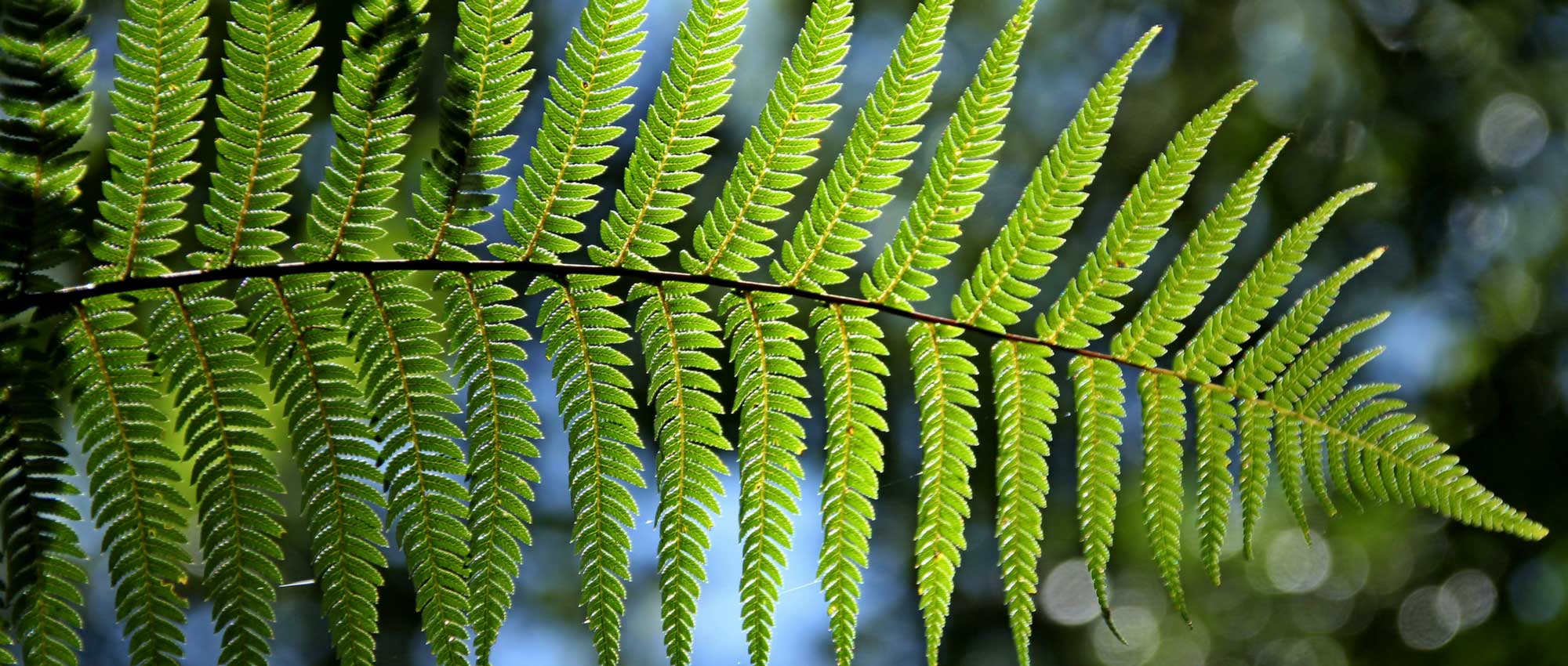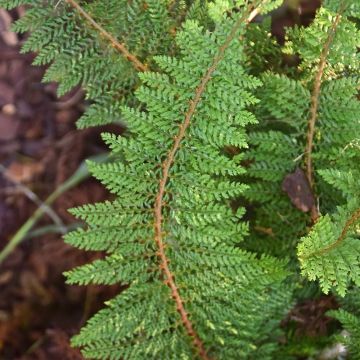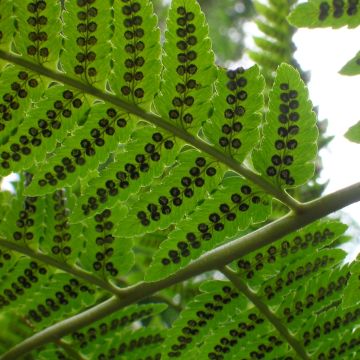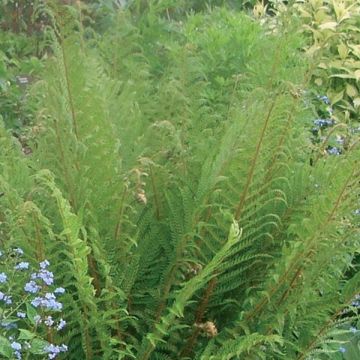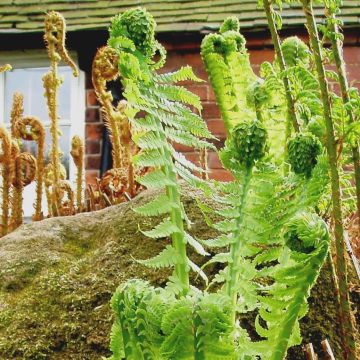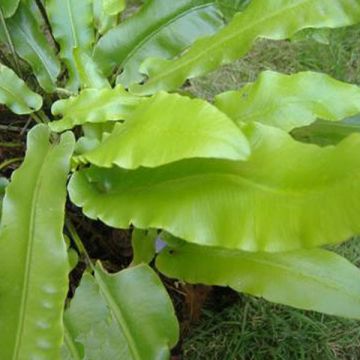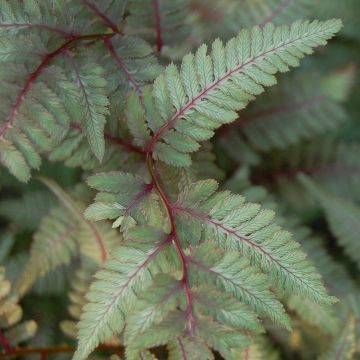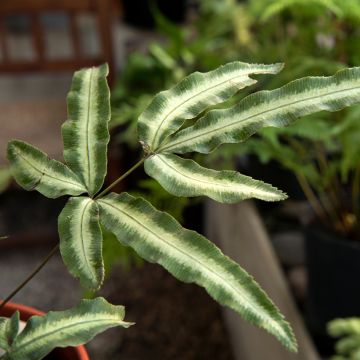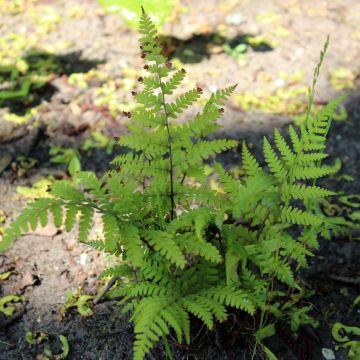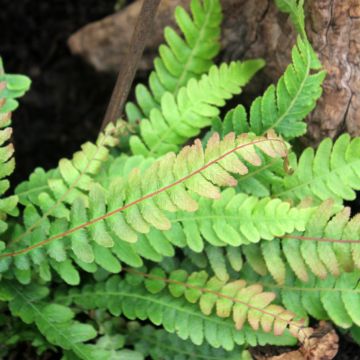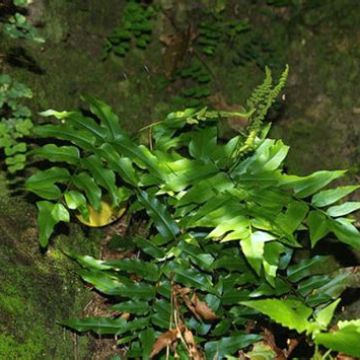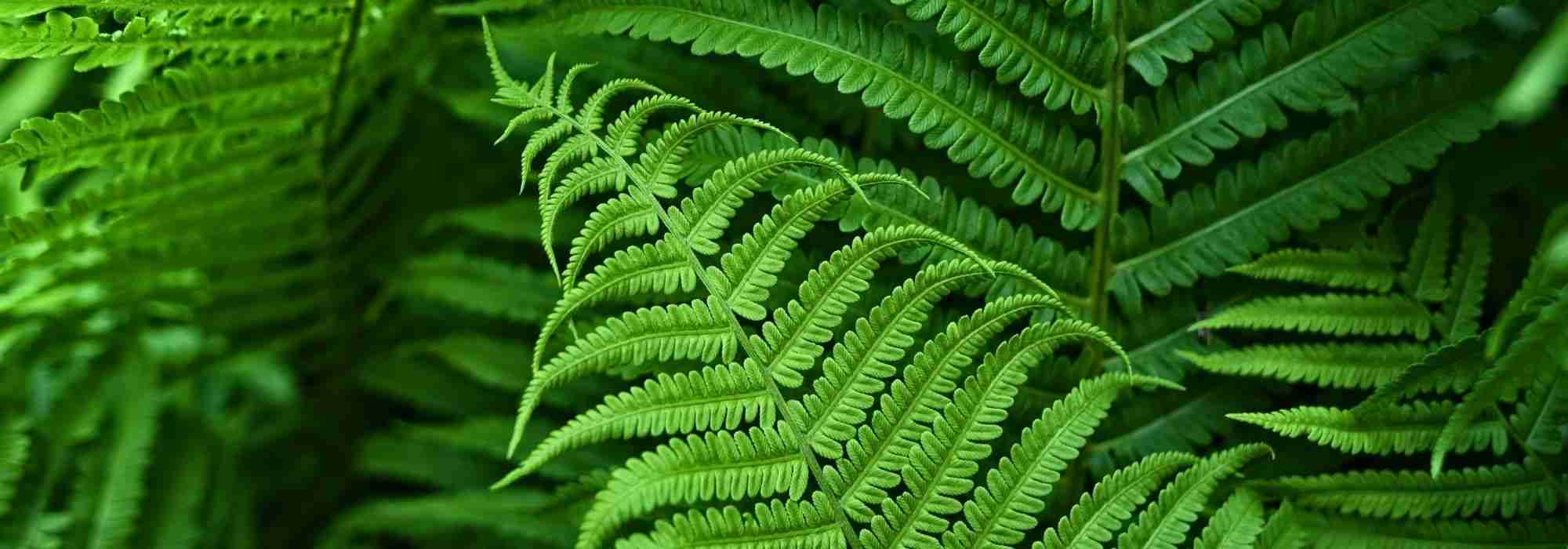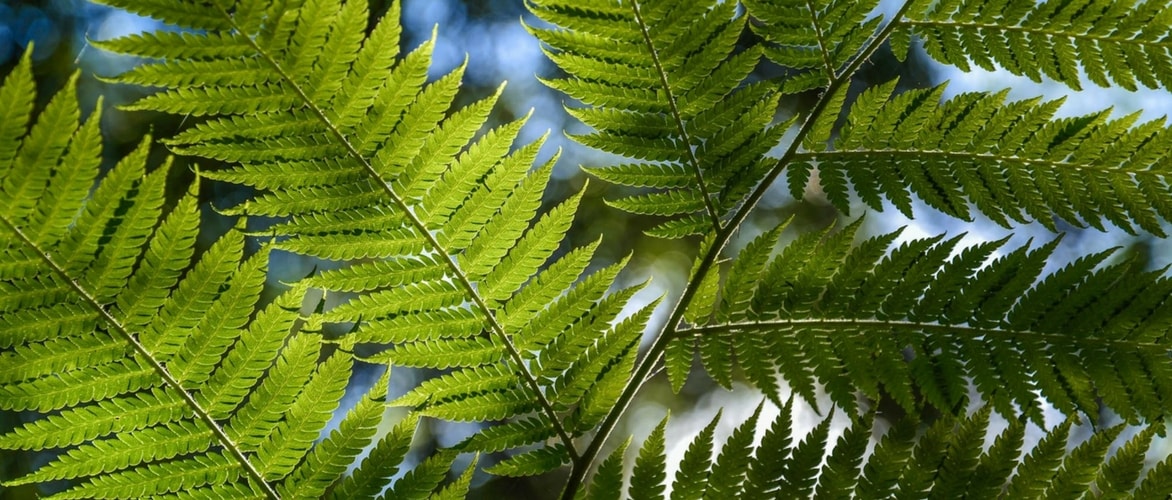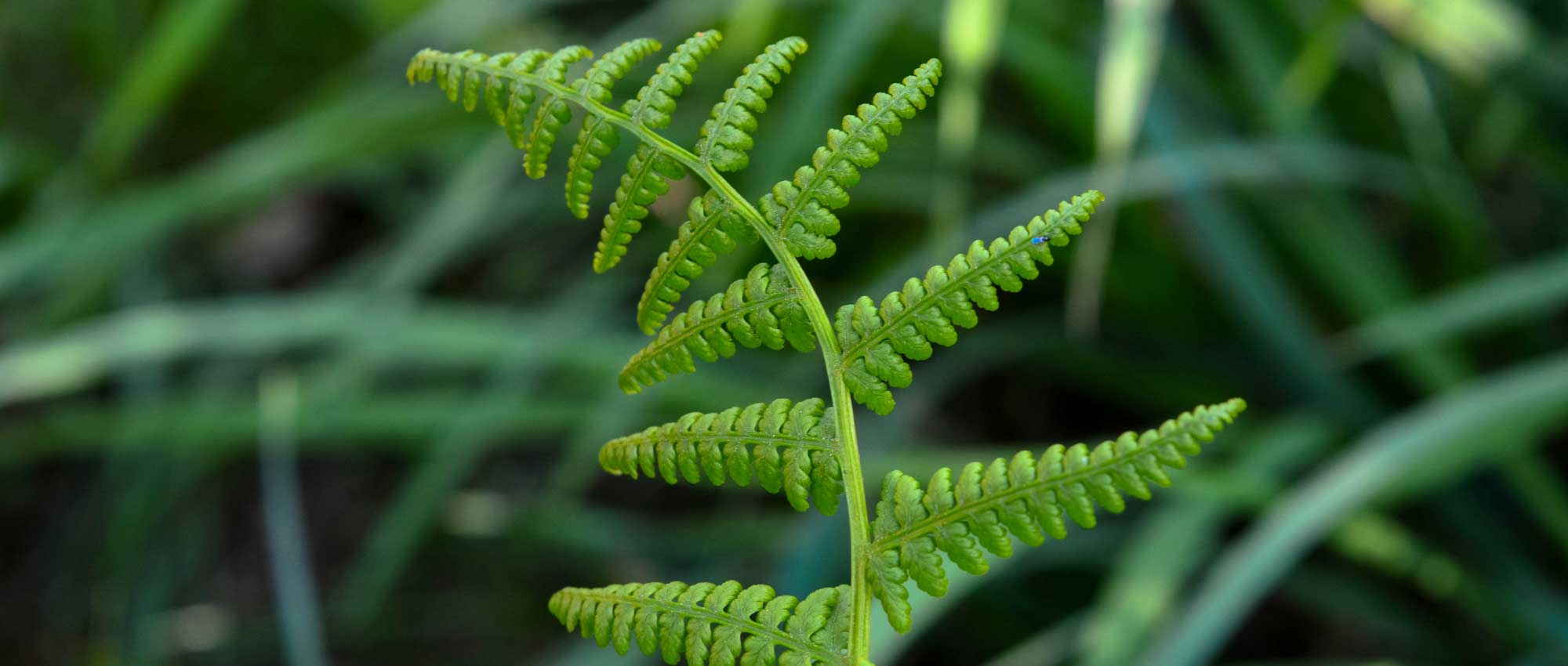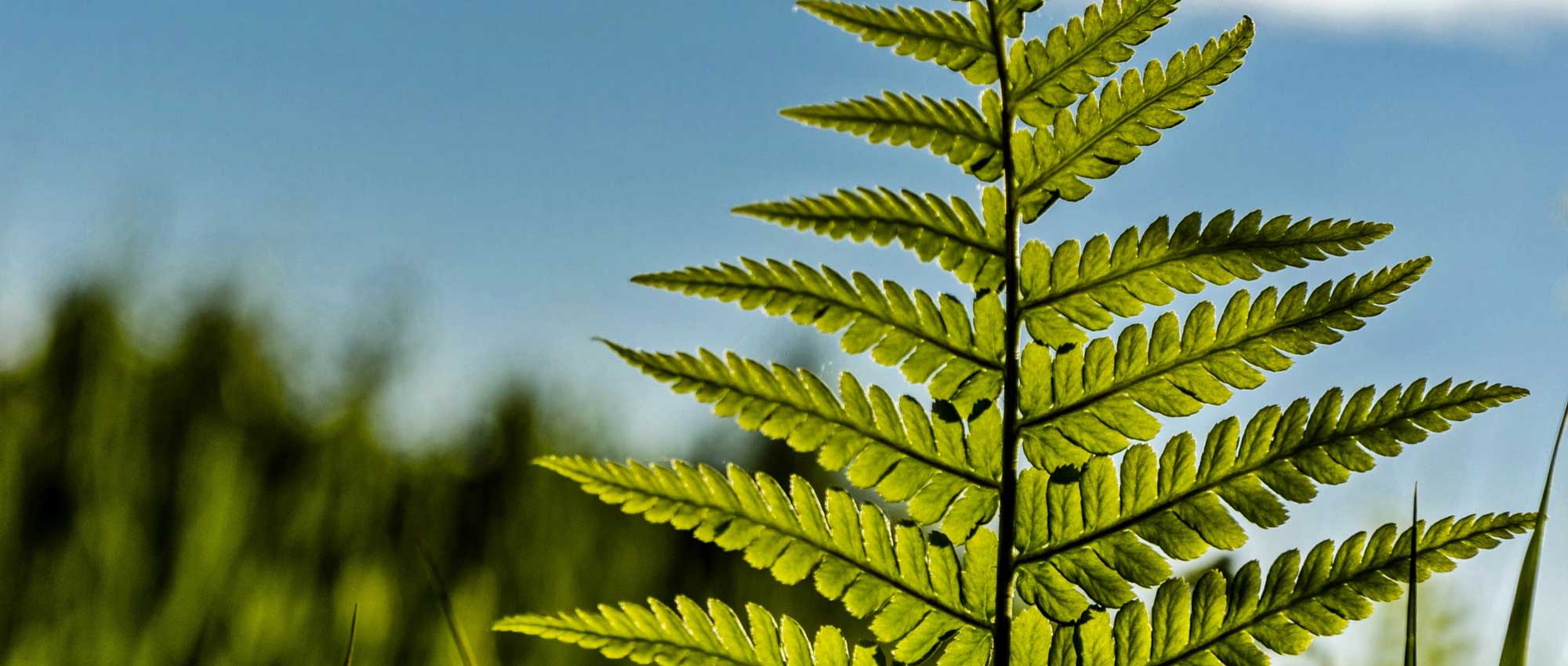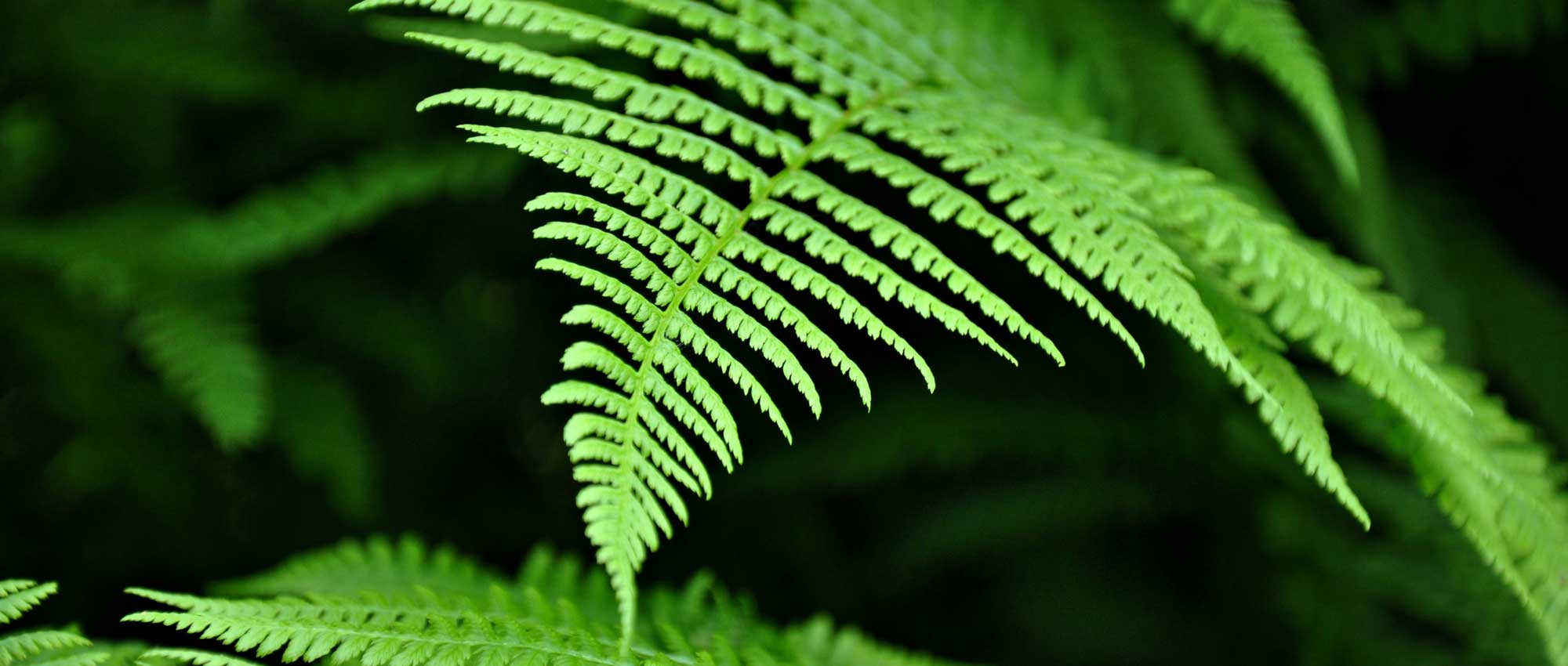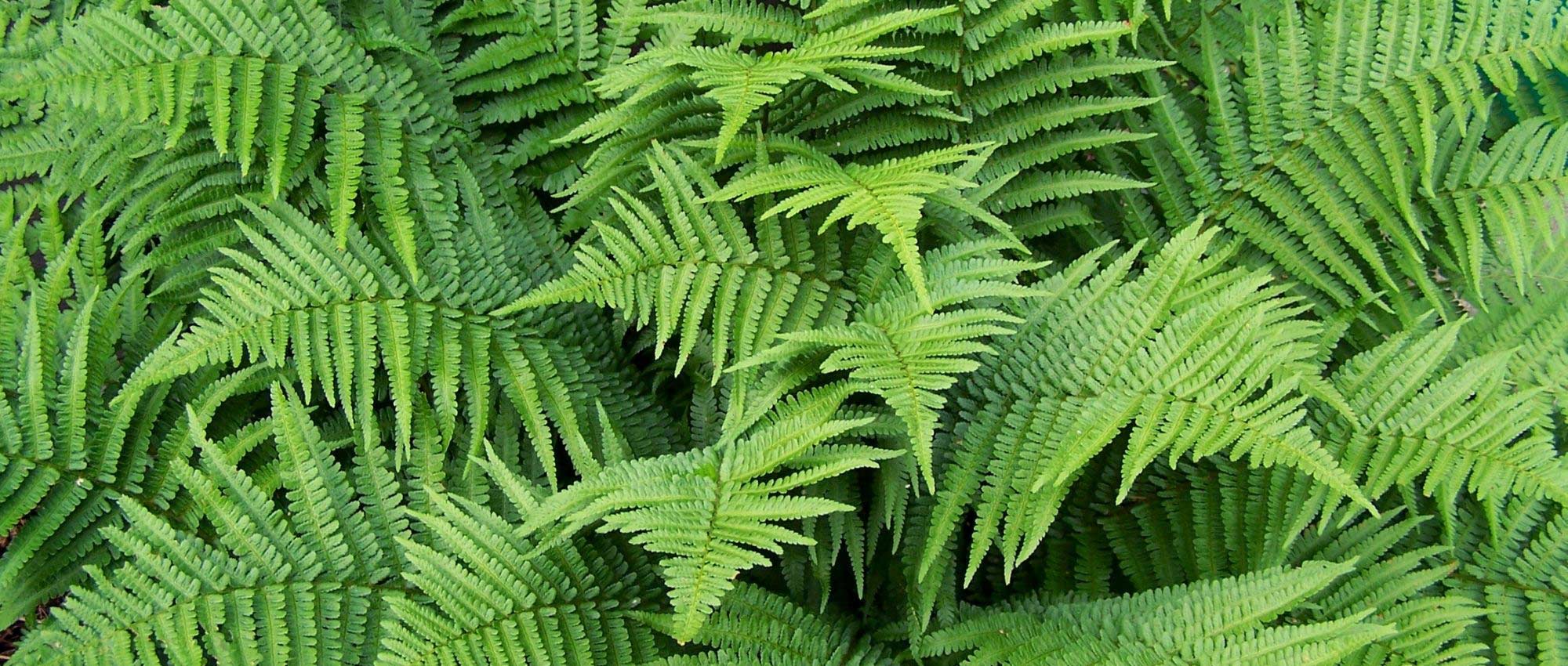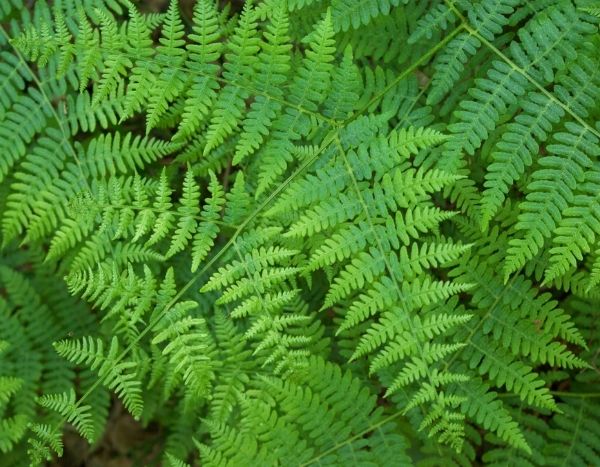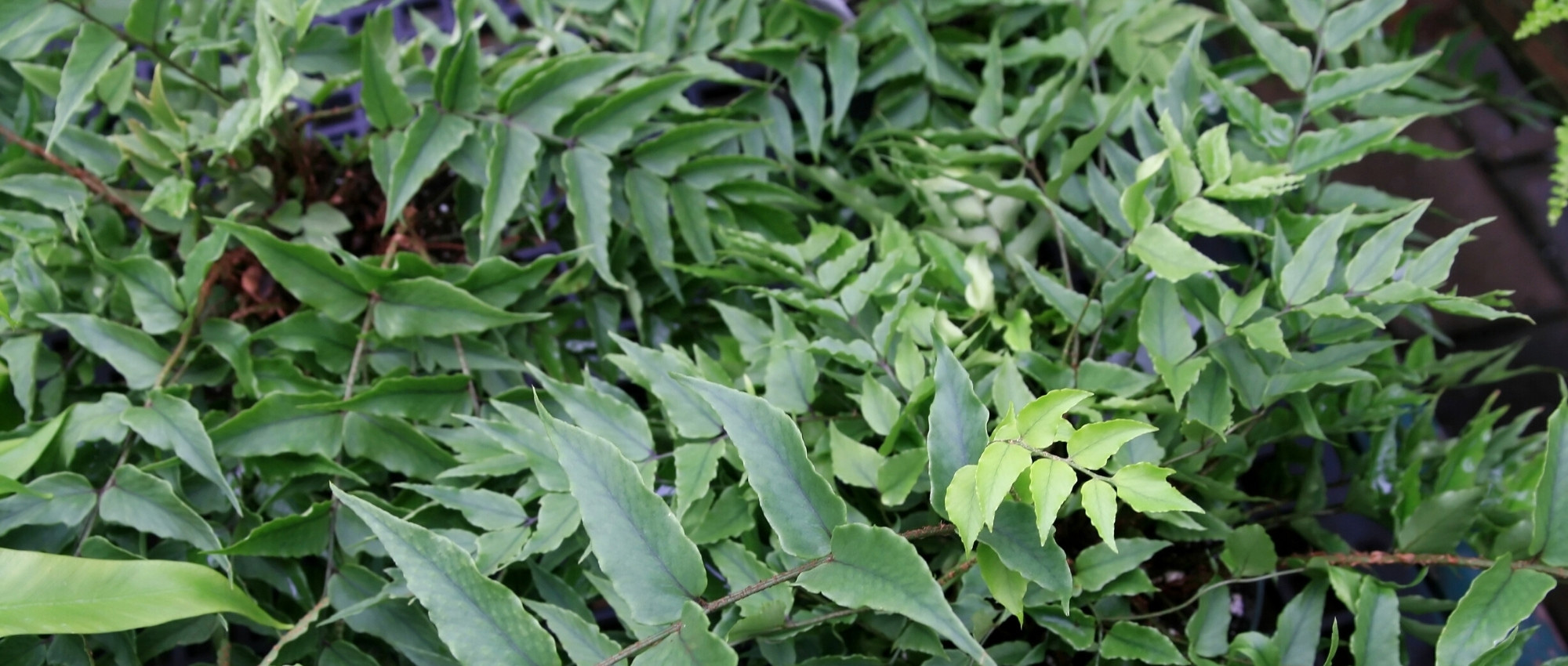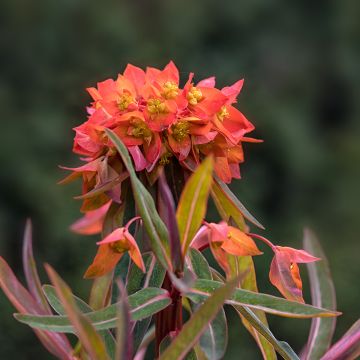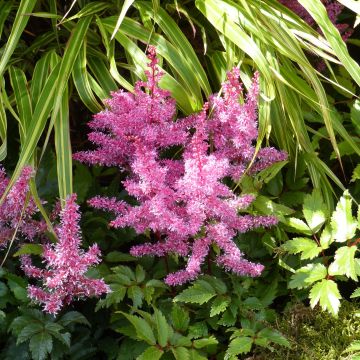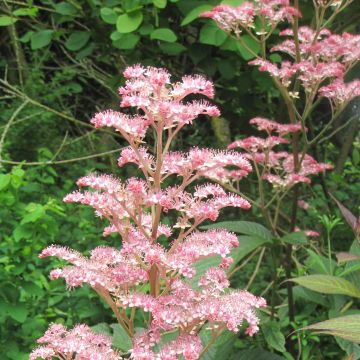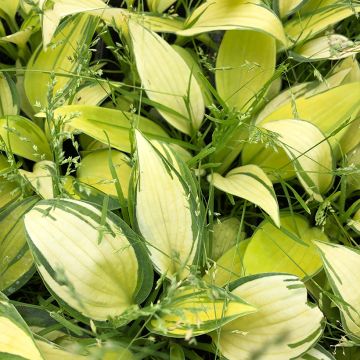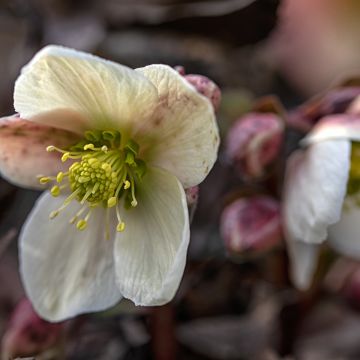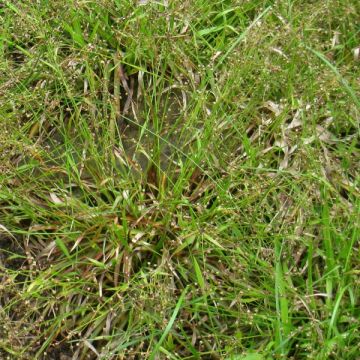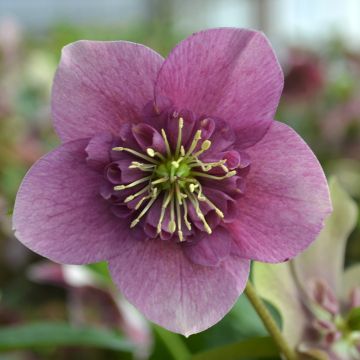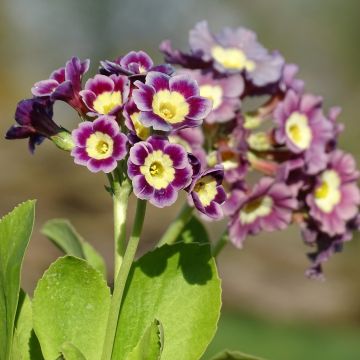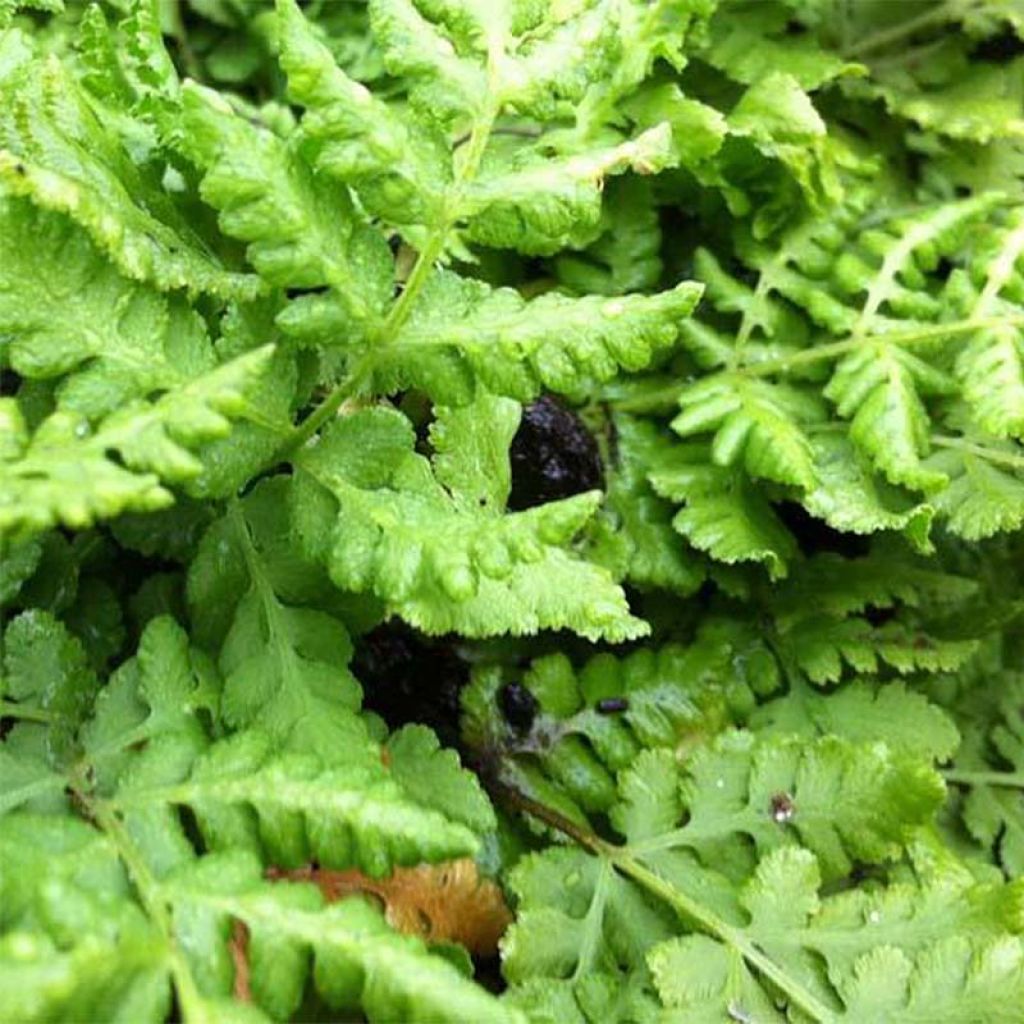

Woodsia obtusa
Woodsia obtusa
Woodsia obtusa
Blunt-lobed Woodsia, Common Woodsia, Large Woodsia
Good condition young plant, to be seen upon spring re-growth.
Joël R., 09/11/2018
Special offer!
Receive a €20 voucher for any order over €90 (excluding delivery costs, credit notes, and plastic-free options)!
1- Add your favorite plants to your cart.
2- Once you have reached €90, confirm your order (you can even choose the delivery date!).
3- As soon as your order is shipped, you will receive an email containing your voucher code, valid for 3 months (90 days).
Your voucher is unique and can only be used once, for any order with a minimum value of €20, excluding delivery costs.
Can be combined with other current offers, non-divisible and non-refundable.
Home or relay delivery (depending on size and destination)
Schedule delivery date,
and select date in basket
This plant carries a 12 months recovery warranty
More information
We guarantee the quality of our plants for a full growing cycle, and will replace at our expense any plant that fails to recover under normal climatic and planting conditions.

Would this plant suit my garden?
Set up your Plantfit profile →
Description
Woodsia obtusa, also known as Blunt-lobed Woodsia, is a small evergreen and bright fern, which forms a light tuft composed of airy fronds of a light and matte green colour. It will settle on slopes, walls, limestone or siliceous rockeries, fitting into the smallest damp crevices. It is a very hardy species, which will thrive in shade or partial shade, in soil that is always damp but perfectly drained.
Woodsia obtusa is part of a very small family formed by the only genus Woodsia, which includes 20 to 30 species. It is a terrestrial botanical species, even a lithophyte, native to North America and the Andes, confined to damp cliffs and mostly limestone ledges. Woodsia obtusa is a perennial fern that develops from a short and ascending rhizome. It forms small compact tufts with a vertical habit, reaching heights and widths of 25 cm (10in). The foliage is composed of light green to grey-green fronds, with a straw-yellow pubescent petiole, elliptical in shape and covered with whitish bristles on both sides. The lamina, 2 to 10 cm (1 to 4in) wide, is divided into 8 to 15 pairs of pinnae. The plant produces sori (small sacs containing spores) on the undersides of the leaves.
Among ferns from temperate zones around the world, Woodsia with rounded lobes is one of the most adaptable. Tolerating both limestone and acidic soils, it cannot withstand stagnant moisture, making it an ideal plant for damp rockeries or rocky areas near waterfalls. It colonises rocks covered with moss, steep walls, rocky cliffs, scree slopes, and settles in crevices in rocks or mortar sealing old walls. It pairs well with cyclamens, Helxine, Viola, and perennial Geranium nodosum. A tiny garden with a very Japanese feel can also be created by planting it between round and mossy stones, alongside Corsican Mint (Mentha requienii) or with a Japanese painted fern (Athyrium niponicum 'Pictum').
Woodsia obtusa in pictures
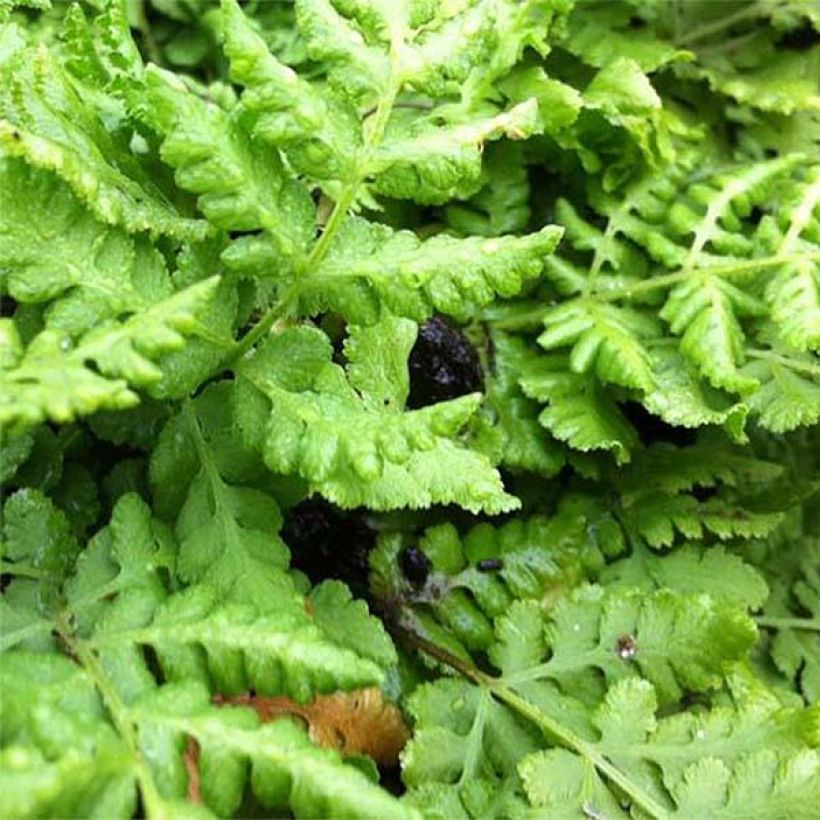

Foliage
Plant habit
Botanical data
Woodsia
obtusa
Woodsiaceae (Dryopteridaceae)
Blunt-lobed Woodsia, Common Woodsia, Large Woodsia
North America
Other Ferns
View all →Planting and care
Woodsia obtusa is a fern that is easy to grow in any damp, rocky or sandy soil, perfectly drained, as it dislikes stagnant moisture. It can be planted in a fresh rockery, or in the crevices of a wall or an old wall facing north or east. Plant it in a crevice, surround the plant with pebbles, ensure good drainage and constant moisture. This small, hardy plant, to -25°C (-13°F) is not invasive and requires no further maintenance.
Planting period
Intended location
Care
Planting & care advice
-
, onOrder confirmed
Reply from on Promesse de fleurs
Similar products
Haven't found what you were looking for?
Hardiness is the lowest winter temperature a plant can endure without suffering serious damage or even dying. However, hardiness is affected by location (a sheltered area, such as a patio), protection (winter cover) and soil type (hardiness is improved by well-drained soil).

Photo Sharing Terms & Conditions
In order to encourage gardeners to interact and share their experiences, Promesse de fleurs offers various media enabling content to be uploaded onto its Site - in particular via the ‘Photo sharing’ module.
The User agrees to refrain from:
- Posting any content that is illegal, prejudicial, insulting, racist, inciteful to hatred, revisionist, contrary to public decency, that infringes on privacy or on the privacy rights of third parties, in particular the publicity rights of persons and goods, intellectual property rights, or the right to privacy.
- Submitting content on behalf of a third party;
- Impersonate the identity of a third party and/or publish any personal information about a third party;
In general, the User undertakes to refrain from any unethical behaviour.
All Content (in particular text, comments, files, images, photos, videos, creative works, etc.), which may be subject to property or intellectual property rights, image or other private rights, shall remain the property of the User, subject to the limited rights granted by the terms of the licence granted by Promesse de fleurs as stated below. Users are at liberty to publish or not to publish such Content on the Site, notably via the ‘Photo Sharing’ facility, and accept that this Content shall be made public and freely accessible, notably on the Internet.
Users further acknowledge, undertake to have ,and guarantee that they hold all necessary rights and permissions to publish such material on the Site, in particular with regard to the legislation in force pertaining to any privacy, property, intellectual property, image, or contractual rights, or rights of any other nature. By publishing such Content on the Site, Users acknowledge accepting full liability as publishers of the Content within the meaning of the law, and grant Promesse de fleurs, free of charge, an inclusive, worldwide licence for the said Content for the entire duration of its publication, including all reproduction, representation, up/downloading, displaying, performing, transmission, and storage rights.
Users also grant permission for their name to be linked to the Content and accept that this link may not always be made available.
By engaging in posting material, Users consent to their Content becoming automatically accessible on the Internet, in particular on other sites and/or blogs and/or web pages of the Promesse de fleurs site, including in particular social pages and the Promesse de fleurs catalogue.
Users may secure the removal of entrusted content free of charge by issuing a simple request via our contact form.
The flowering period indicated on our website applies to countries and regions located in USDA zone 8 (France, the United Kingdom, Ireland, the Netherlands, etc.)
It will vary according to where you live:
- In zones 9 to 10 (Italy, Spain, Greece, etc.), flowering will occur about 2 to 4 weeks earlier.
- In zones 6 to 7 (Germany, Poland, Slovenia, and lower mountainous regions), flowering will be delayed by 2 to 3 weeks.
- In zone 5 (Central Europe, Scandinavia), blooming will be delayed by 3 to 5 weeks.
In temperate climates, pruning of spring-flowering shrubs (forsythia, spireas, etc.) should be done just after flowering.
Pruning of summer-flowering shrubs (Indian Lilac, Perovskia, etc.) can be done in winter or spring.
In cold regions as well as with frost-sensitive plants, avoid pruning too early when severe frosts may still occur.
The planting period indicated on our website applies to countries and regions located in USDA zone 8 (France, United Kingdom, Ireland, Netherlands).
It will vary according to where you live:
- In Mediterranean zones (Marseille, Madrid, Milan, etc.), autumn and winter are the best planting periods.
- In continental zones (Strasbourg, Munich, Vienna, etc.), delay planting by 2 to 3 weeks in spring and bring it forward by 2 to 4 weeks in autumn.
- In mountainous regions (the Alps, Pyrenees, Carpathians, etc.), it is best to plant in late spring (May-June) or late summer (August-September).
The harvesting period indicated on our website applies to countries and regions in USDA zone 8 (France, England, Ireland, the Netherlands).
In colder areas (Scandinavia, Poland, Austria...) fruit and vegetable harvests are likely to be delayed by 3-4 weeks.
In warmer areas (Italy, Spain, Greece, etc.), harvesting will probably take place earlier, depending on weather conditions.
The sowing periods indicated on our website apply to countries and regions within USDA Zone 8 (France, UK, Ireland, Netherlands).
In colder areas (Scandinavia, Poland, Austria...), delay any outdoor sowing by 3-4 weeks, or sow under glass.
In warmer climes (Italy, Spain, Greece, etc.), bring outdoor sowing forward by a few weeks.






























